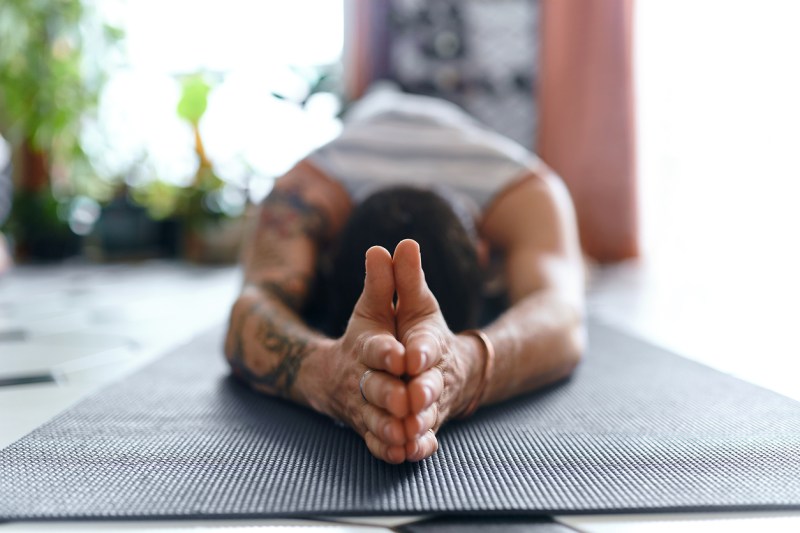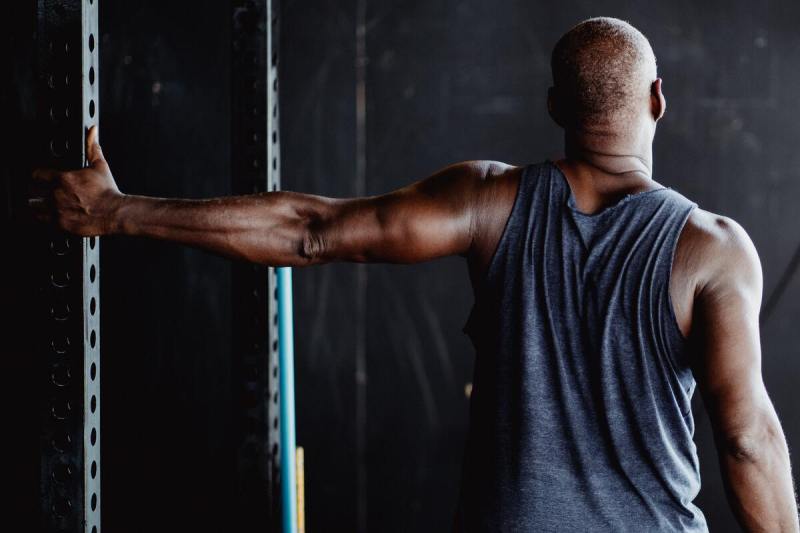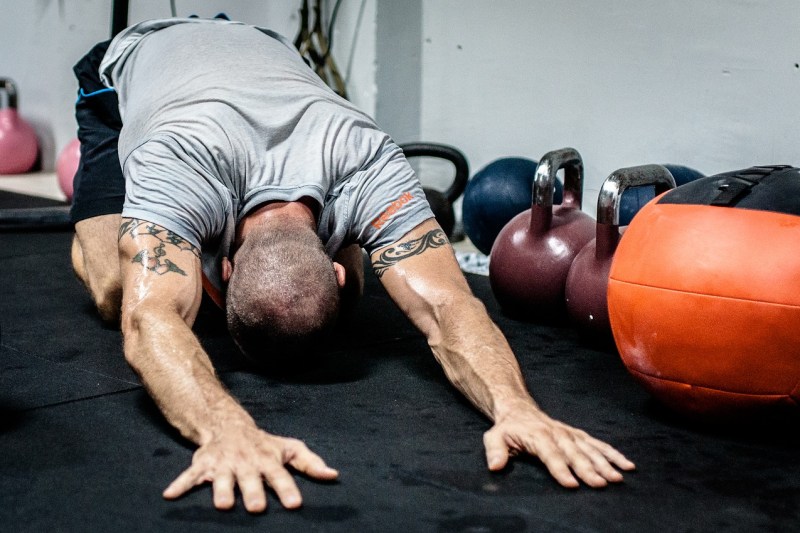
While it’s often associated with graceful movements and flexibility, Pilates is not just for women anymore. In recent years, more and more of the guys have been discovering the incredible benefits of Pilates workouts for men. It’s a form of exercise that not only helps in achieving a lean and toned physique but also improves overall strength, posture, and flexibility.
So, if you’re new to Pilates, let’s dig into this wildly popular workout, exploring the history of Pilates, the specific benefits it offers to men, and a comprehensive guide to eight fantastic Pilates workouts that are great for men.

What is Pilates?
Pilates and yoga are often confused, but Pilates is actually a bit more intense and challenging. Developed by Joseph Pilates in the early 20th century, it was initially known as “Contrology.” It was created as a system of exercises to improve physical strength, flexibility, and mental well-being. Joseph Pilates himself was a gymnast, bodybuilder, and martial artist, and he designed Pilates as a way to integrate mind and body, emphasizing core strength and control.
Over time, Pilates has gained immense popularity worldwide, becoming a staple in fitness routines for people of all ages and genders. Today, Pilates is not just a form of exercise, but also a holistic approach to health and fitness, focusing on balance, coordination, and mindfulness.

Benefits of Pilates for men
1. Improved core strength
One of the primary benefits of Pilates for men is enhanced core strength. The core muscles, including the abdominals, obliques, and lower back muscles, are crucial for stability and balance. Pilates workouts specifically target these muscles, helping men develop a strong and stable core.
2. Increased flexibility
Flexibility is often overlooked in men’s fitness routines, but it’s essential for overall well-being. Pilates promotes flexibility by stretching and elongating muscles, improving range of motion in joints. This increased flexibility can reduce the risk of injuries and enhance athletic performance.
3. Better posture
Poor posture is a common issue among men, often caused by sedentary lifestyles and desk jobs. Pilates exercises emphasize proper alignment and body awareness, helping men correct their posture and prevent chronic back pain.
4. Enhanced muscle tone
Pilates workouts target both large and small muscle groups, resulting in improved muscle tone and definition. Men can achieve a lean and sculpted physique through regular Pilates practice.
5. Stress reduction
Pilates incorporates controlled breathing and mindful movement, which can help reduce stress and improve mental clarity. It provides an opportunity for men to relax and unwind while working on their physical fitness.

8 of the best Pilates workouts for men
1. Pelvic curl
This exercise primarily targets the glutes, hamstrings, lower back, and core muscles.
- Lie on your back with your knees bent and feet flat on the floor.
- Inhale, engage your core, and lift your hips off the mat, creating a straight line from your shoulders to your knees.
- Exhale, roll your spine back down to the mat, one vertebra at a time.
- Repeat for 10-15 reps.
2. Back extension
With this move, we’re focusing on the lower back muscles and glutes. Here’s how to do a back extension.
- Lie face down on a mat with your arms extended overhead.
- Inhale, engage your core, and then lift your chest and arms off the mat while keeping your feet on the ground.
- Exhale, lower your chest back down to the mat.
- Repeat for 10-15 reps.
3. Leg change
Ready to engage and build your lower abdominal muscles? The leg change workout is your ticket.
- Lie on your back with your legs lifted off the ground and knees bent at a 90-degree angle.
- Inhale, engage your core, and then lower one leg toward the mat while keeping the other leg in the tabletop position.
- Exhale, return the lifted leg to the tabletop position, and then switch legs.
- Repeat for 10-15 reps on each leg.
4. Supine twist
This move gloriously stretches out the spine, chest, and oblique muscles. The supine twist improves your flexibility like a boss.
- Lie on your back with your arms extended out to the sides and your knees bent.
- Inhale, engage your core, and then slowly lower both knees to one side while keeping your shoulders on the mat.
- Exhale, return your knees to the center, and repeat on the other side.
- Repeat for 10-15 reps on each side.
5. Rotating chest lift
Target the oblique muscles and core in one fell swoop with rotating chest lifts.
- Sit on the mat with your knees bent and feet flat on the floor.
- Cross your arms over your chest and engage your core.
- Inhale, rotate your upper body to one side, lifting your chest.
- Exhale, return to the center, and repeat on the other side.
- Repeat for 10-15 reps on each side.
6. Glute bridge
Work those glutes, hamstrings, and lower back into toned, strengthened powerhouses.
- Lie on your back with your knees bent and feet flat on the floor.
- Inhale, engage your core, and lift your hips off the mat, creating a straight line from your shoulders to your knees.
- Exhale, lower your hips back down to the mat.
- Repeat for 10-15 reps.
7. Side bend
Want to zero in on the oblique muscles? These side bends focus hard on those sides.
- Sit on the mat with your legs extended to one side, one hand on the mat for support, and the other hand behind your head.
- Inhale, engage your core, and bend to the side, lifting your upper body.
- Exhale, return to the starting position, and then repeat on the other side.
- Repeat for 10-15 reps on each side.
8. Side-lying leg abduction
The outer thigh muscles can be engaged along with the hip abductors with side-lying leg abductions.
- Lie on your side with your legs straight and stacked on top of each other.
- Inhale, engage your core, and lift the top leg as high as you can without moving your pelvis.
- Exhale, lower the leg back down.
- Repeat for 10-15 reps on each side.
Guys, Pilates isn’t just for the ladies, and it offers a host of health benefits to you as men. From improved core strength and flexibility to enhanced muscle tone and better posture, Pilates can help men achieve their fitness goals while promoting a great sense of overall well-being.
Incorporating these eight Pilates workouts into your workout routine can help you stay tight, toned, and feeling your best. So, gentlemen, it’s time to roll out the mat and start your Pilates journey to a healthier, fitter you.
Editors' Recommendations
- Cranberries are great for your health: RDs reveal how to add them to your diet this winter
- These are the best yoga poses to add to your bedtime routine for better sleep
- New study says this is the best time of day to exercise if you want to lose weight
- 8 reasons why a rowing machine needs to be part of your workout routine
- Tai chi for beginners: 7 reasons you need to add it to your daily routine




